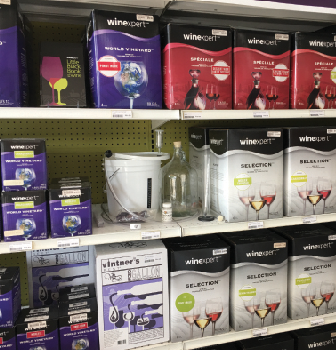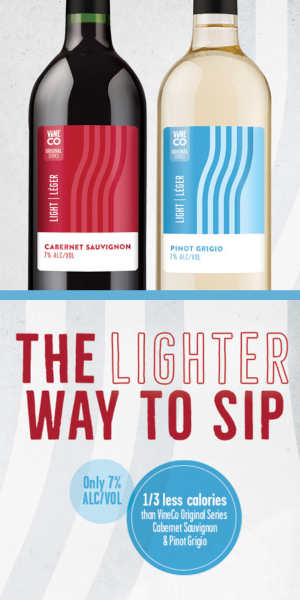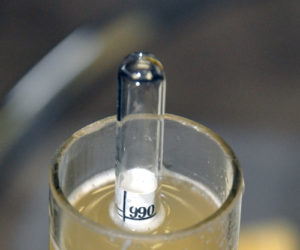 The modern wine kit, with its gleaming plastic bag in a jazzy-looking box, didn’t start out as a miracle of modern technology. Arguably, the first wine kits were actually used in ancient Mesopotamia. People of the first civilization in this area would store a mixture of sprouted, crushed grains and dried dates against future need. When the time came, they would crumble this concentrated source of sugar into water, and allow it to ferment with the natural yeast present on the dates. In effect, it was the first wine kit, although you’d be hard-pressed to find one on the shelves today.
The modern wine kit, with its gleaming plastic bag in a jazzy-looking box, didn’t start out as a miracle of modern technology. Arguably, the first wine kits were actually used in ancient Mesopotamia. People of the first civilization in this area would store a mixture of sprouted, crushed grains and dried dates against future need. When the time came, they would crumble this concentrated source of sugar into water, and allow it to ferment with the natural yeast present on the dates. In effect, it was the first wine kit, although you’d be hard-pressed to find one on the shelves today.
Modern wine kits first began appearing in the 1970s. They featured cans of pasteurized grape concentrate and packages of acid, nutrient and yeast. While complete, and capable of fermenting into a wine-like beverage, they were actually pretty bad. Awful, really, but at least they made an alcohol-containing beverage. Modern kits still follow the format of ready-to-dilute-and-ferment stuff in a package, but they’ve come a long, long way.
There are three common types of wine kits. There are five-liter (1.3 gallon) kits that contain mainly concentrate. Concentrate is grape juice with some of the water removed. There are 7.5-liter (1.9 gallon) kits that have a blend of concentrate and juice. These kits are sometimes called four-week kits. Then there are premium kits, usually 15–16 liters (3.9–4.2 gallons) in volume, with a large percentage of fresh juice in the blend. Premium kits are sometimes called six-week kits.
Most people assume that the volume of liquid in the kit determines the quality of a wine kit: The higher the volume of raw materials, the higher the quality. While this is generally true, it fails to take into account whether or not a kit is appropriate for your needs.
Some winemakers need wine for early drinking, to flesh out a cellar of fresh juice and grape wines that require longer aging. Others like the quality of the premium kits and want to build up a stock of well-aged bottles for the future. No single kit can do both these things.
A kit designed for a long maturation will not taste good after a few months. On the other hand, a kit designed to mature quickly will taste quite good in only a few weeks, but won’t improve significantly if you’re trying to build up a multi-year cellar. The bottom line is, if your kit wine isn’t at its peak when you plan to serve it, it’s not the right kit for you.
So which kit is right for you? First, we have to understand what goes into the kits, and how it influences the flavors and age-ability. The ingredients we’re concerned with are concentrate, juice and sugar.
The other things — like yeast nutrient and grape acids — go in all kits but don’t have a bearing on quality, just on fermentation characteristics and the balance of acidity and strength.
The Raw Materials
Sugar
There is a perception that if a kit contains sugar it has been made from inferior concentrates, or it has been made with less concentrate and “stretched” with added sugar.
The addition of sugar to wine actually has a history going back hundreds of years, or perhaps even longer. Sugar is added to wines to increase the alcohol content without influencing other flavors. Alcohol is, of course, an important component in the flavor and structure of a wine.
The practice of adding sugar to must is called chaptalization, after a minister in Napoleon’s government, M. Chaptal. Some of the greatest (and most expensive) bottles of wine, including many Premier Cru Burgundies of France, have been made from chaptalized must.
The grape concentrates used in wine kits often come from very hot growing regions, such as California or the south of France. The grapes from these regions are very ripe, and used for the full volume of the kit they would make a heavy, clumsy, “overflavored” wine with poor balance. By reducing the volume of this very intense concentrate with sugar — usually sucrose — a more balanced wine can be achieved without lowering the alcohol content. The bottom line on the sugar is that it is there to increase the alcohol content. If the kit has low levels of flavor and aroma, it is due to a flaw in manufacture or process, not sugar content.
Concentrate
Concentrate is grape juice with the water removed. There are several ways to do this. You can boil the water off in a vacuum concentrator, squeeze it out in a reverse-osmosis unit, or sublimate it off with a conical distillation unit. The most important thing that the different processes can control is the level of total dissolved solids (TDS) of the concentrate. The higher the level of total dissolved solids in the concentrate, the more flavor.
Juice
Winemaking grape juice is made from pressings of fresh grapes. The juice is often clarified by fining and light filtration. It can be varietal juice, or a blend of different grapes. The two most important factors in juice quality are the absolute quality of the grapes used and the level of retained solids in the grape juice.
The Solid Facts
Kits are made from combinations of juices, concentrates and sugar. What separates them is the level of total dissolved solids. Total dissolved solids is what is left over after every bit of the water is removed from the kit. Simply put, the more total dissolved solids, the more aroma and flavor compounds a wine will have. Concentrate-only kits have the lowest TDS levels, while premium kits — those that contain mostly juice — have the highest. Fresh juice has even more, but it has some problems that take it out of consideration for most people who are interested in the simplicity of a kit wine.
But that’s only half the explanation. When a kit has high levels of solids, it also winds up with high levels of fermentation byproducts and “green” flavors and aromas. “Green” refers to the flavor compounds in the wine kit that will, over time, change into the more mature flavors and aromas that make great wine. A kit with lower TDS levels will have fewer of these green characteristics, and be ready to consume sooner. A kit with higher TDS levels will have more of these compounds, but it will take longer to mature.
The Kits Concentrate-Only
With their low levels of TDS, concentrate-only kits mature very quickly as they produce very few “green” flavors. Within a week or two after recovering from bottle shock, they taste nearly as good as they ever will, rewarding consumers who need wine to fill their racks in a hurry. Most produce wine that you can begin drinking after only six weeks.
Concentrate and Juice
With more varietal juice content, and higher levels of TDS, concentrate and juice kits mature at a slower rate than concentrate-only. Although they drink quite well after only a month in the bottle, they show their best after approximately three months for whites, and six months for reds. These times depend on a series of factors including the kit, the vintage, the size of the bottles they are stored in, the corks used, and — most importantly — the storage conditions. There can be no guarantee of a date for maturity, just individual conditions, and individual wines.
Premium Kits
With very high levels of varietal juice and high levels of total dissolved solids, premium kits don’t drink especially well for the first few months. In fact, most whites don’t open up for six months, and most reds need at least twelve months.
This is not to say they taste bad. Indeed, by three months of age they easily surpass the concentrate-only kits in taste and aroma. But they continue to develop fabulously. Indeed, while acknowledging the aging differences mentioned above, most premium kits will actually improve for years.
“Super-Premium” Kits
Super-Premium kits have the highest levels of TDS. Super-premium kits are usually marketed as limited versions of a regular premium kit, and are often vineyard designated. They contain the finest (and the most expensive) juices available. They require patient aging to show their charms and develop over an even longer period than regular premium kits. These kits are designed for cellaring.
Fresh Juices
Fresh juices have the highest levels of dissolved solids by far, but this makes the early drinkability trade-off very unfavorable. Correctly made white wines from fresh juice taste raw and green for 18 months, and only start to show quality after two years. With reds, the green period doesn’t pass for two years, and only after three years do the flavors truly meld and mellow. Another problem with fresh juices for many consumers is the level of winemaking skill needed to process them correctly. Unlike a kit there is no guarantee that they will turn out at all. Fresh juices are not balanced for acidity, potential alcohol, flavor and aroma as wine kits are. With kits, this has been done for you.
So, although a concentrate-only kit may initially reward early drinking, it will not develop the flavours and aromas that the higher TDS kits will. By contrast Premium and Super-Premium kits don’t drink nearly as well while young, but continue to develop spectacularly over time. Fresh juices ultimately make the best wine in the hands of a skilled winemaker with competent techniques, but drinking them when they are less than two or three years old simply wastes their potential. And making wine from fresh juices requires skills beyond that needed to make wine from a kit.
So which kit is right for you? People making wine for an impending event might enjoy a concentrate-only kit more than a super-premium kit. In contrast, somebody striving to build up a cellar of fine vintages might be disappointed with the same kit and would be much better off with a premium kit. The bottom line is to plan your cellar and know your needs (see next page). If you make wine kits appropriate to your drinking timeline, you’ll always have good wine ready to drink!






